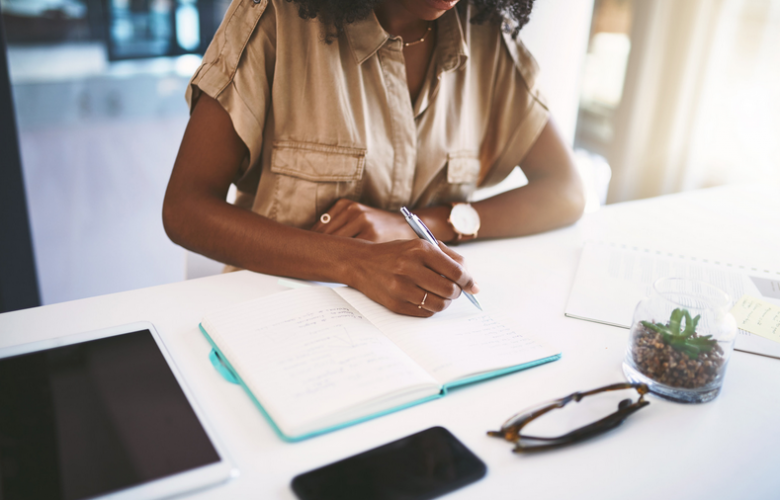
Have you ever begun studying for a test, only to discover that you cannot access the necessary notes or assignments?
Do you save documents in a stack and then spend a lot of time perusing them when you need to locate the assignment?
Disorganized is a waste of time. Here are some strategies to keep you organized when it comes in (a) note-taking and assignment assignments and (b) the email you use to communicate:
Notes and assignments
1. Take an accordion-bound folder each day to school.
The accordion folder ought to be similar to like this.
2. Each of your subjects or classes to a specific folder section with an accordion. You can also assign a separate area to homework that is not completed.
As the day progresses as the day goes on, make sure you place your notes and assignments that you get in their respective sections. You can put your unfinished homework across all subjects into your “incomplete homework” section.
3. Find binders for your home. I recommend one binder for each type of work (for each subject). ).
As an example, you can use one binder to keep your history notes, another for your history projects, and one to take your history exams.
4. Each day, you should go through every day, go through the “incomplete assignments” part of your folder.
Check to see if you’ve missed the homework assignment.
5. Each week, move all of your notes and assignments that you have graded from your accordion folder to the appropriate binder.
You’ll notice if you’ve lost the notes, assignments, or even your own if you do this regularly. So, you’ll be able to get them replaced ahead of when you need to study for the next test.
1. Forward all school emails to Gmail. Gmail account.
I’ve used nearly every popular email provider out there. Gmail is by far the most effective. Therefore, make one up if you don’t have a Gmail account.
2. Create as few email folders as possible.
Many high-achieving students don’t need more than a few email folders.
Why don’t you?
Folders make it more challenging to manage emails. Additionally, there is the Gmail search feature is fantastic. It can be used to find any emails from the past you need.
3. You should process your emails daily.
I suggest checking your email via your PC and not on your phone.
It’s not always simple to respond to emails via your smartphone. However, messages will appear to be read even if you’ve not completed the process.
It is more likely that you have all the necessary data stored on your PC, which means you’ll be able to quickly and efficiently sort through your email.
4. Be sure to follow these guidelines when processing your emails:
- If the email doesn’t need an answer, then archive it.
- If an email needs to be answered, then do it immediately. Then, save the email in its original format.
- If an email needs a reply but takes considerable time to write, create an assignment (refer to Principle # 2). Keep the original email archived after you’ve replied.
If you follow these guidelines, you’ll be able to reach “inbox zero” (no emails in your inbox) nearly every day. You’ll get rid of the stress caused by emails and feel confident that all tasks necessary to complete have been accomplished or scheduled.
5. Utilize Boomerang to access the Gmail application.
Its Boomerang to Gmail application has already helped me save dozens or even hundreds of hours.
It lets you set an appointment to follow up with someone if they haven’t responded to your email on a particular date. This app is excellent for managing group projects and others.
Principle #9: Focus on only one thing at a time
Getting into the rhythm of an undertaking can take some time, so you must complete one task before moving for the following.
Don’t multitask, either.
You should not text, watch television, or browse your social media accounts as you work.
Studies have shown research shows that multitasking isn’t achievable. If you think you’re multitasking, in reality, you’re shifting between tasks, which is reducing the efficiency of your entire system.
Here are some suggestions that top students employ to help them focus on one thing at the same time:
1. Each time you begin your homework or study session, make a note of the things you’ll be working on.
Note this down on a scrap of paper or a Post-it Note, and put it on your desk. This will bring you back to the project you’re supposed to be working on.
2. Give a certain amount of time for the job.
Make sure you set a realistic timeframe, so you’re more likely entirely on the job you have to complete.
3. If you feel like switching tasks, shut your eyes. Take some deep breaths.
The need to multitask or do something more “fun” is a constant stream.
Take a moment to close your eyes. Then, take some deep breaths, and the waves will go through. After that, you can get back to work.
4. Develop your focus slowly.
If you’re having difficulty focusing, try taking small steps to increase your focus.
Begin by focusing for 10 minutes with complete concentration. In the following week, you can increase the time to twelve minutes. Then 14 minutes, and then. In the end, you’ll be able to concentrate for 30 to 40 minutes!
